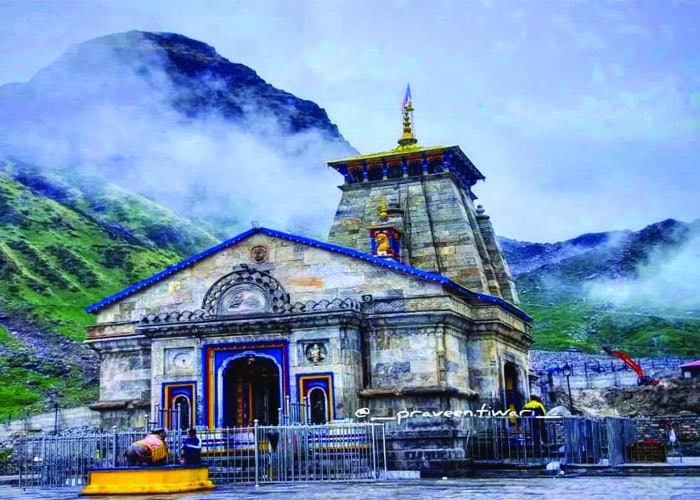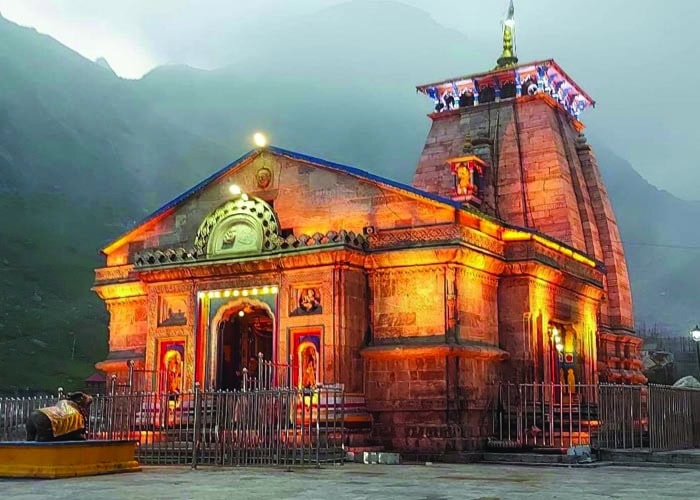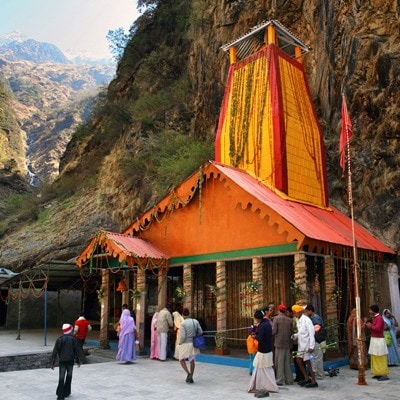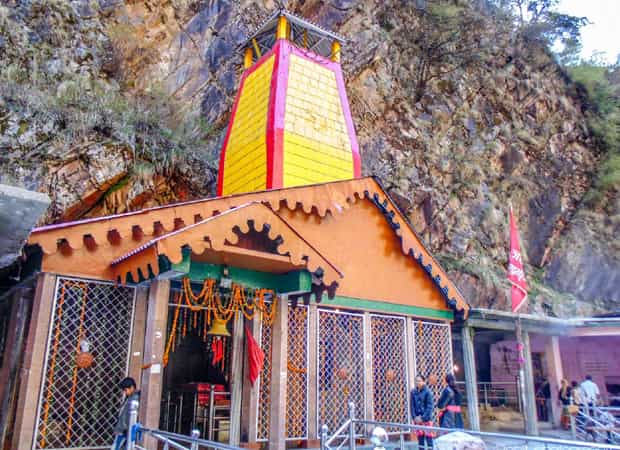Chardham Yatra - Yamunotri, Gongotri, Kedarnath & Badrinath
Package Overview:
Embark on a sacred pilgrimage with our 9 Nights 10 Days Char Dham Yatra. Begin from Haridwar to Barkot, followed by a divine visit to Yamunotri. Travel to Uttarkashi and seek blessings at Gangotri. Continue to Guptkashi and experience the spiritual aura of Kedarnath. Journey through Rudraprayag to reach the holy Badrinath Temple. Conclude your yatra with a return to Haridwar, enriched with divine blessings and inner peace. Book now for a soul-enriching experience in the Himalayas! The Char Dham Yatra is a revered Hindu pilgrimage circuit in Uttarakhand, India, encompassing these four sacred sites.
DETAILED ITINERARY
Day-1: Haridwar to Barkot (210kms/7-8hr)
Pickup from Haridwar Railway Station / Doiwala Airport, Drive to Barkot via Dehradun & Mussoorie. Enroute visit Kempty Fall and others later drive straight to your Hotel for night halt.
Day-2: Barkot to Yamunotri {36kms drive & 6kms Trek (one side)}
Drive to Jankichatti / Phoolchatti, trek start from here to Yamunotri (6kms). Either by walk or by horse or by Doli at own cost. Arr. Yamunotri, One can cook rice by packing it in a cloth and dipping it in the hot water of the hot kund. Pilgrims take this cooked rice home as “Prasad”. Here near the temple “Pooja” can be offered to Divya Shila, After taking bath in Jamunabai Kund’s warn water and having “Darshan” of pious “Yamunaji” returning to Jankichatti. Later drive back to Barkot. Overnight stay at Hotel.
Yamunotri Temple: Maharani Gularia of Jaipur built the temple in the 19th Century. It was destroyed twice in the present century and rebuilt again.
Surya Kund: There are a Number of thermal springs in the vicinity of the temple, which flows into numerous pools. The most important of these is Surya Kund.
Divya Shila: A rock pillar, worshipped before entering the Yamunotri Temple.
Day 3: Barkot to Uttarkashi (100kms/4hr)
Uttarkashi: Situated at the bank of river Bhagirathi. The temple of Lord Vishwanath is located here where a massive iron trident is erected.
Day 4: Uttarkashi to Gangotri (100kms/3-4 each side)
Gangotri Temple: The temple, constructed by the Gorkha General Amar Singh Thapa in the 18th Century, is situated on the right bank of Bhagirathi.
Submerged Shivling: Submerged in the river, this natural rock Shivling is the place where, according to mythology Lord Shiva sat when he received the Ganga in his matted lock. It is visible in winter months when water level decreases.
Kedar Ganga Sangam: Around 100 Yards from the Ganga Temple flows the river Kedar Ganga. Starting from the Kedar Valle, this river meets the Bhagirathi on its left bank
Day 5: Uttarkashi to Guptkashi (220kms/8-9hr)
Early morning, drive straight to Guptkashi. Check in Hotel, night halt.
Day 6: Rudraprayag – Rishikesh
Gaurikund: At a distance of 5kms from Sonprayag and at an altitude of 1982 meters., one can take bath in the hot water pond here and visit the Gauri Temple. This is the place where Goddess Parvathi meditated to attain Lord Shiva. It is the base for a trek to Kedarnath.
Kedarnath: The Kedarnath shrine, one of the 12 jyotirlingas of Lord Shiva, is a scenic spot situated, against the backdrop of the majestic Kedarnath range. Kedar is another name of Lord Shiva, the protector and the destroyer. According to legend, the Pandavas after having won over the Kaurava in the Kurukshetra war, felt guilty of having killed their own brothers and sought the blessings of Lord Shiva for redemption. He eluded them repeatedly and while fleeing took refuge at Kedarnath in the form of a bull.
On being followed he dived into the ground, leaving his hump on the surface. The remaining portions of Lord Shiva appeared at four other places and are worshipped there as his manifestations. The arms appeared at Tungnath, the face at Rudranath, the belly at Madhmaheshwar and his locks (hair) with head at Kalpeshwar. Kedarnath and the four above-mentioned shrines are treated as Panch Kedar
Day 7: Kedarnath to Rudraprayag (14Kms Down Trek & 75kms/3hr by Road)
Day 8: Rudraprayag to Badrinath (165kms/7hr)
Drive to Badrinath via Joshimath. Check in Hotel. Later visit Badrinath Temple. There are other interesting sight seeing spot like Mana, Vyas Gufa, Maatamoorti, Charanpaduka, Bhimkund and the “Mukh” of the Saraswati River. Just within the three kms of Badrinathjee. Overnight stay.
Badrinath one of the ‘Four Dhams’ is one of the most celebrated pilgrimage spots of the country and is situated at an elevation of 3,133 meters, guarded on either side by the two mountain ranges known as Nar & Narayan with the towering Neelkanth Peak providing a splendid backdrop. This revered spot was once carpeted with wild berries. Thus the place got the name “Badri van”, meaning “forest of berries”.
Tapt Kund : Natural thermal springs on the bank of the river Alaknanda, where it is customary to bathe before entering the Badrinath temple.
Narad Kund : A recess in the river, near Tapt Kund, forming a pool from where the Badrinath idol was recovered.
Brahama Kapal : A flat platform on the bank of river Alaknanda. Hindus perform proppitiating rites for their deceased ancestors.
Sheshnetra : 1.5kms. away is a boulder having an impression of the legendary serpent, better known as the Sheshnag’s eye.
Charanpaduka : 3kms. away is a beautiful meadow where the footprint of Lord Vishnu is seen on a boulder.
Mata Murty Temple : Devoted to the mother of Sri Badrinath ji. Other important temples include Sesh Netra Temple, Urvashi Temple and Charanpaduka.
Mana Village : Inhabited by an Indo-Mongolian tribe, it is the last Indian village before Tibet.
Vasundhara : As the name suggests, vasundhara is a magnificent water fall. This place is 5 kms. from Badrinath out of which 2 kms. is motorable upto Mana.
Bhim Pul : On the other side of Mana village, a massive rock forming a natural bridge, lies over the roaring Saraswati river. It presents a spectacular view of water thundering down through the narrow passage under the rock and is believed to have been placed there by Bhim, the second eldest among the five Pandava brothers.
Vyas Gufa (cave) : Near Mana Village, this is a rock-cave where Ved Vyas is believed to have composed the Mahabharata and the pauranic commentaries.
Day 9: Badrinath to Rudraprayag (165kms/7hr)
Day 10: Rudraprayag to Haridwar (165kms/5-6hr)
Book A Trip
GALLERY








